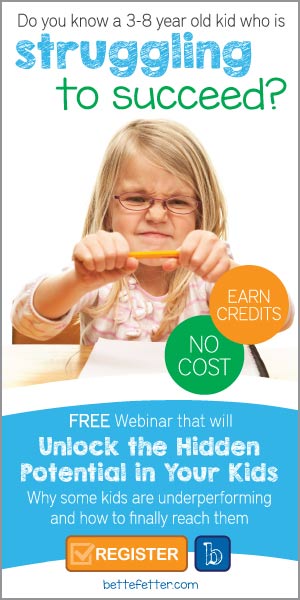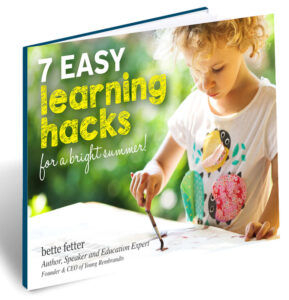Offer Understanding Not Excuses
 As much as we need to advocate for our visual learners in an education system that is not designed for their minds, we cannot let it become an excuse or crutch for them to fall back on when things get hard or “boring.”
As much as we need to advocate for our visual learners in an education system that is not designed for their minds, we cannot let it become an excuse or crutch for them to fall back on when things get hard or “boring.”









 Wouldn’t it be great if there was a solution to every child’s learning struggles? Sadly, there isn’t but, there is something that can help the majority of children in schools.
Wouldn’t it be great if there was a solution to every child’s learning struggles? Sadly, there isn’t but, there is something that can help the majority of children in schools.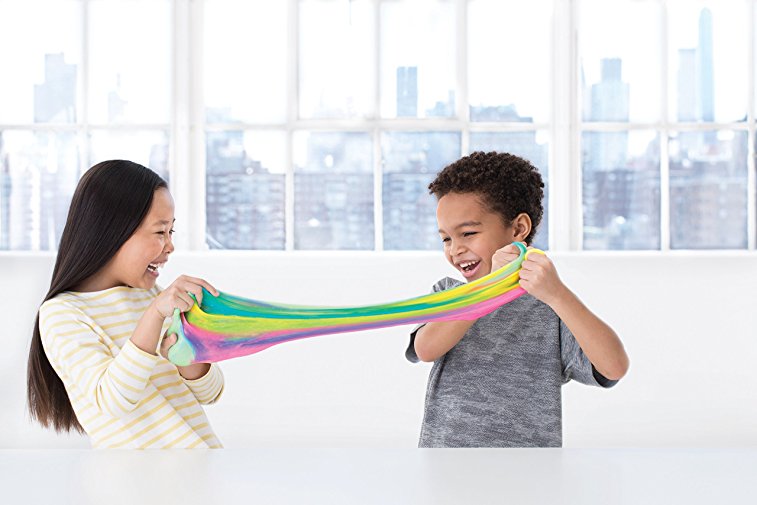 I know you’ve already filled your house with markers, crayons, pencils, paper and all sorts of other things to keep the kids creative. So now what can you get your creative, visual thinker? I have found some great ideas to utilize those right brain skills and keep the kids creating.
I know you’ve already filled your house with markers, crayons, pencils, paper and all sorts of other things to keep the kids creative. So now what can you get your creative, visual thinker? I have found some great ideas to utilize those right brain skills and keep the kids creating.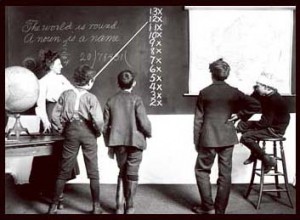 In the 21st century, the importance lies with being an independent multi-tasker who can think on her feet, deal with change, and devise multiple solutions to a problem that hasn’t yet happened.
In the 21st century, the importance lies with being an independent multi-tasker who can think on her feet, deal with change, and devise multiple solutions to a problem that hasn’t yet happened. In episode 27 of Living Life as a Visual Thinker, I answer a parent email about a second grader whose school wanted to have him tested for ADD.
In episode 27 of Living Life as a Visual Thinker, I answer a parent email about a second grader whose school wanted to have him tested for ADD. Approximately 11% of children 4 to 17 years of age have been diagnosed with ADD as of 2011, and it’s most commonly diagnosed in 7 year olds. That’s an alarming statistic, but we can turn the negatives of ADD into positives by understanding and applying the success strategies used with visual-spatial learners.
Approximately 11% of children 4 to 17 years of age have been diagnosed with ADD as of 2011, and it’s most commonly diagnosed in 7 year olds. That’s an alarming statistic, but we can turn the negatives of ADD into positives by understanding and applying the success strategies used with visual-spatial learners.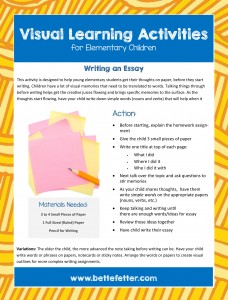 For visual learners it can be difficult to transfer the plethora of thoughts and ideas from their busy minds onto paper. I have created a downloadable pdf to help you teach your visual learners to organize their thoughts before writing the essay.
For visual learners it can be difficult to transfer the plethora of thoughts and ideas from their busy minds onto paper. I have created a downloadable pdf to help you teach your visual learners to organize their thoughts before writing the essay. With four young, curious kids, our house was always a hub of creative activity. I knew we’d better have some order to it all or we’d drown in our own swirl of creativity. There were schedules, structure and lots of order behind our “chaos.”
With four young, curious kids, our house was always a hub of creative activity. I knew we’d better have some order to it all or we’d drown in our own swirl of creativity. There were schedules, structure and lots of order behind our “chaos.” 